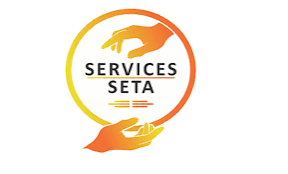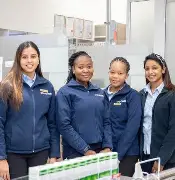How to Access Seta-Funded Learnerships and Applications in 2025

How to Access Seta-Funded Learnerships and Applications in 2025
Looking for a way to build your skills and jumpstart your career? Seta-funded learnerships offer a practical route. These programs help young people gain real experience while earning a stipend. As South Africa faces high youth unemployment, these opportunities become more important than ever. Staying updated on how to find and apply for these learnerships in 2025 can open doors to new careers. This guide walks you through what Seta learnerships are, how to find them, and tips for a successful application.
Understanding Seta-Funded Learnerships
What Are Seta-Funded Learnerships?
Seta-funded learnerships combine work experience with classroom training. They focus on specific sectors like healthcare, construction, or IT. Unlike general courses, learnerships give you a real job with a training component. Most programs include a stipend — a monthly payment — to support your living costs. Once completed, learners earn a nationally recognized certificate. This not only boosts your skills but also improves your chances of getting a full-time job.
The Role of SETA in Skills Development
Seta, or Sector Education and Training Authority, manages funding for skills training across sectors. They operate under the national skills development strategy. Putting funds into training programs helps reduce youth unemployment. SETA also works with businesses and government to identify skills gaps. By investing in targeted training, they help shape a more skilled workforce that can meet industry demands.
Key Seta Sectors for 2025
In 2025, sectors like construction, tourism, finance, and ICT are leading the way in offering learnerships. Some sectors are expanding their programs to address skill shortages quickly. For example, the ICT sector is rolling out digital skills training, while the construction industry focuses on infrastructure projects. These sectors promise the most growth and employment opportunities in the coming year, making them smart choices for learners.
How to Find Seta-Funded Learnerships in 2025
Official Seta Websites and Portals
Checking the official SETA websites is the best way to stay current. Each sector has its own portal with listings of available learnerships. Examples include the Construction SETA (CETA), Tourism and Hospitality SETA (THETA), and Finance SETA (FSCA). Use these portals to find details about programs, eligibility, and application forms. Navigating these sites carefully is key—look for updates and news sections.
Government and Industry Partnership Platforms
Besides SETA sites, national platforms like the National Learner Record Database (NLRD) publish learnership opportunities. Industry partnerships often announce new initiatives or funding boosts. Follow industry associations and government departments for updates on targeted programs, especially those aimed at youth or marginalized groups.
Online Job Portals and Social Media
Popular job portals like Careers24 and Indeed often list Seta-funded learnerships. Use keywords like “Seta learnership” or “funded training” to filter results. Follow SETA and sector-specific social media pages for real-time updates. Many programs now use social media as their main communication tool for quick alerts on new openings.
Application Process for 2025 Learnerships
Eligibility Criteria
To qualify for a Seta learnership, you usually need to meet age limits, educational background, and sometimes, location requirements. Some programs are aimed at young people under 30; others may have special provisions for people with disabilities or from underserved communities. Confirm specific qualification thresholds on the official program pages.
Step-by-Step Application Guide
- Collect your documents: Your CV, ID copy, academic transcripts, and any relevant certificates.
- Visit the official portal: Find the learnership of interest and read the application instructions carefully.
- Complete the form: Fill out your details accurately. Double-check for typos or missing info.
- Attach documents: Upload or scan your supporting files with good quality.
- Submit early: Don’t wait until the last minute. Keep copies of your application confirmation.
Avoid common mistakes like missing deadlines or submitting incomplete forms. These can knock you out of consideration.
Important Deadlines and Timelines
Most Seta learnerships open applications early in the year or late in the fiscal cycle. Keep track of application windows—many close after a few weeks. Set calendar reminders and use alert tools, so you never miss important dates. Regularly check official sources for updates during peak application periods.
Tips for Successful Applications
Research and Match Your Skills
Before applying, read the program details carefully. Highlight how your experience matches their requirements. Use relevant keywords from the job description. For example, if a learnership requires basic computer skills, emphasize your familiarity with software or online tools.
Gather Strong Supporting Documents
Your CV should be clear, concise, and targeted. Include relevant experience, volunteer work, or courses. Write a motivation letter explaining why you want the learnership and how it fits your goals. A well-crafted application shows your enthusiasm and professionalism.
Follow Up and Networking
After submitting, send a polite follow-up email if contact info is available. Connecting with industry professionals or mentors can also boost your chances. They might offer advice or notify you of future openings. Networking helps you stay ahead in competitive pools.
Updates and Changes for 2025
New Initiatives and Funding Allocations
In 2025, expect more targeted funding for sectors that face critical skills shortages or aim to boost youth employment. The government has announced new incentives for sectors with high growth potential. These changes could open more doors for applicants from diverse backgrounds.
Digital Transformation and E-Learner Support
Many learnerships are moving online, making it easier for remote learners. Virtual orientation, e-learning modules, and online assessments are now common. These resources aim to make learning more accessible, especially during times of social distancing or for people in rural areas.
Special Programs and Targeted Opportunities
There are also programs specifically designed for youth, disabled persons, and marginalized communities. Some sectors have unveiled special initiatives to close skills gaps for these groups. Applying to these programs increases your chances of gaining meaningful training and employment.
Conclusion
Getting into a Seta-funded learnership in 2025 requires careful research, timely action, and preparation. Use official portals, stay updated on deadlines, and tailor your applications to each program. These opportunities are a powerful way to gain skills, earn a stipend, and raise your employment prospects. Keep an eye on official announcements and social media pages—these channels will keep you informed. Take charge of your future today by applying for a Seta-funded learnership and start building a better career.




